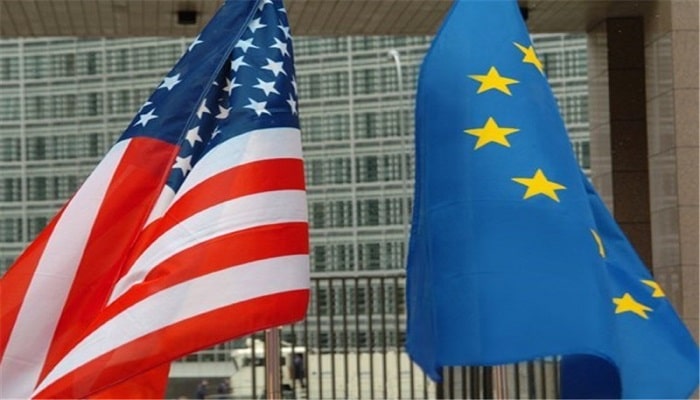PNN – In an article, a western media assessed the military independence from the US, which has been put on the agenda especially by the European Union during the presidency of Donald Trump, as a difficult challenge and a far-reaching goal.
According to the report of Pakistan News Network, the Frankfurter Allgemeine Zeitung newspaper discussed the long and tumultuous road of Europe towards military independence from America and wrote: Europeans are currently setting ambitious goals for themselves.
Mette Frederiksen, the Prime Minister of Denmark, whose government currently holds the rotating presidency of the European Union, says: Europe must be able to defend itself independently by 2030 at the latest.
NATO member states have recently pledged to increase their hard defense spending to at least 3.5 percent of GDP over the next ten years, effectively doubling it. This has also been repeatedly linked to the expectation that Europe will have to manage itself in the future without the support of the United States of America.
Read more:
Trump: I will make “major statements” about Russia next week
Of course, there is nothing wrong with these ambitions. However, this creates expectations that obscure the reality. Even after recent decisions, Europe is still far from achieving this strategic independence.
This issue can be easily understood by looking at the statistics. Currently, the United States provides 44 percent of NATO’s total military capabilities. Of course, this share is expected to decrease to 30% by 2035.
EU defense plans have recently been developed with the assumption that US forces will remain in large numbers in Europe. Currently, there are about 100,000 troops in Europe, 20,000 of whom have been temporarily moved across the Atlantic since Russia invaded Ukraine.
In any case, dependence on American weapons systems will remain for Europe. While the Europeans want to strengthen their industry, this is only possible in the medium term. Europe will need to buy the first market-ready systems in the coming years to fill the stand-alone capability gaps – and the US will likely continue to provide the largest number.
This is already evident in the fleet of F-35 fighter jets now being built in Germany. It will be at least another 15 years before a European model is available. The situation is similar with precision strikes against targets in Russia. Currently, only the United States has ballistic missiles and intermediate-range cruise missiles. Germany wants to borrow them until it develops its own solution with other countries. This will also last until the 2030s.
On the other hand, there has been no talk of nuclear deterrence. A kind of realism is formed here. Even if Berlin talks with Paris about this, hold exercises together and maybe one day even deploy French nuclear weapons in Germany, this will not be a solution for all of Europe. Especially since French systems are designed for an Armageddon scenario and do not allow for the scaled escalation necessary to deter an enemy whose doctrine calls for the early use of nuclear weapons.
Europe will not be able to survive in the long term without the US nuclear umbrella. According to NATO estimates, its adequate replacement would require defense spending of at least 8% of economic output.

